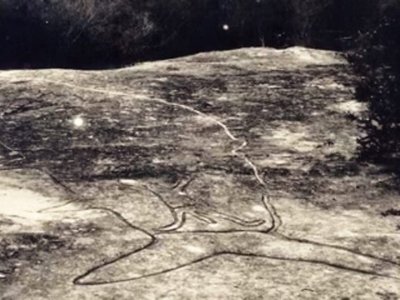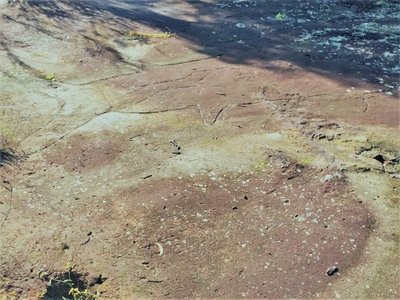Aboriginal Carving of a Whale


Balls Head is a high
spit of land that juts out into the harbor waters from Waverton, and is the site of one of the most accessible aboriginal carvings around North
Sydney
.
There, at the Coal Loader Centre for Sustainability, is an ancient engraving of a whale—a large figure around 20 feet long. Its shallow inscribed lines have faded over time, but are clearly visible, as is a mysterious, ambiguous figure within the whale’s tail. It has alternately been interpreted as a man and as a four-legged animal.
The carving was uncovered during renovations at the Coal Loader, which was once a crucial link in the movement of the commodity through most of the 20th century. Today the renovated site is open to the public for tours, environmental events, an artisan market, and a community nursery.
The Centre is also at an entrance to lands that have been restored and transformed to return the Balls Head area to a state that resembles its original bushland, where its former inhabitants, the Cammeraygal people, lived. From this remarkable lookout point they could easily have spotted whales at a time when they regularly swam the harbor.
Aboriginal carvings in the area were first chronicled and mapped back in 1899, and it’s known that other, smaller figures were etched nearby. Unfortunately they were either lost during the original construction of the Coal Loader, or were covered in the continuing industrialization of the site. But there is still hope that they can be found again to stand alongside the whale.